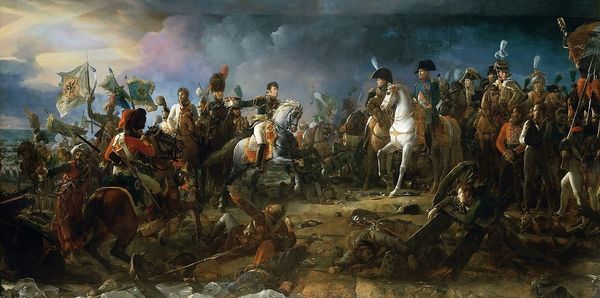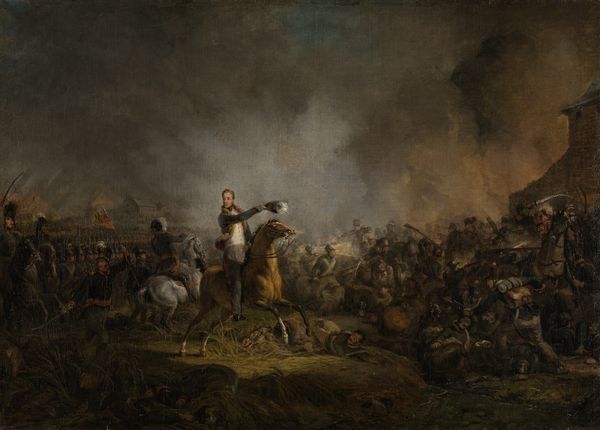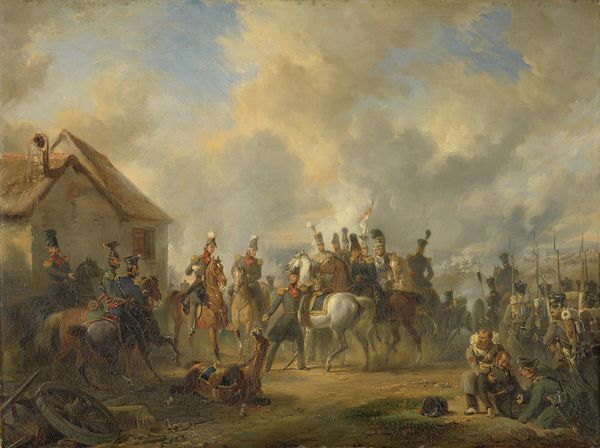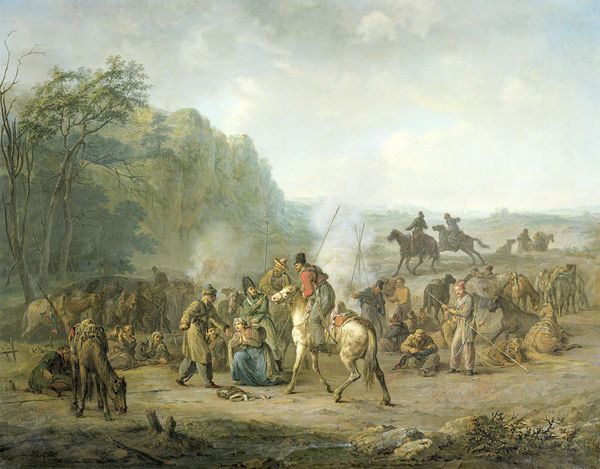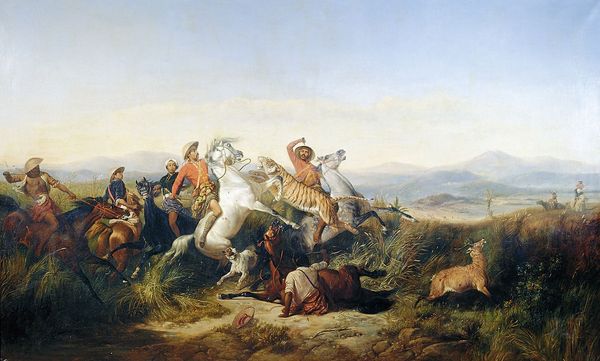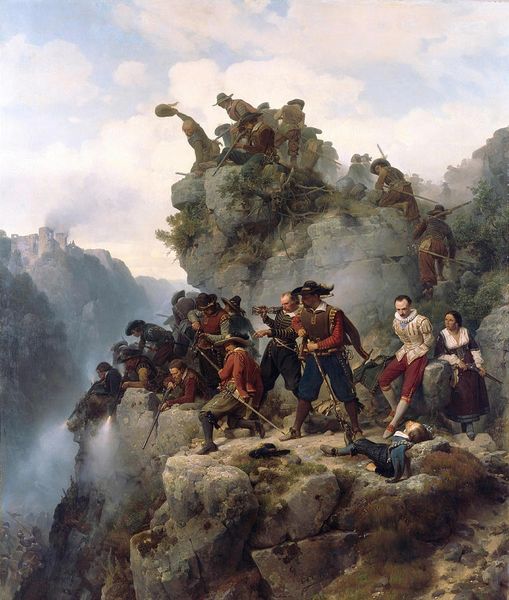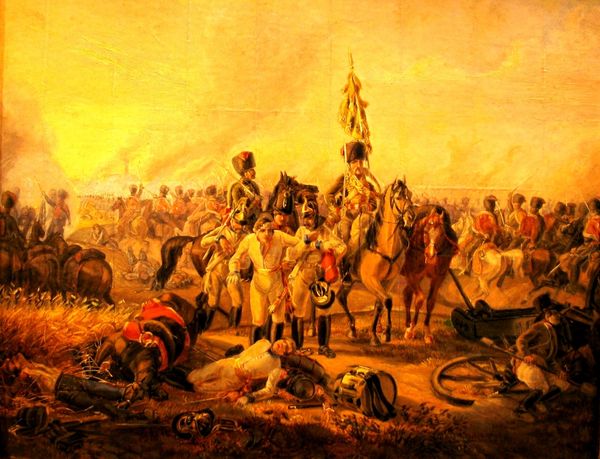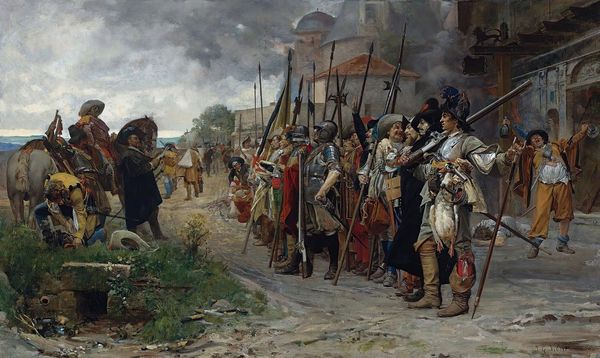
painting, oil-paint
#
figurative
#
painting
#
oil-paint
#
figuration
#
oil painting
#
romanticism
#
genre-painting
#
history-painting
Copyright: Public Domain: Artvee
Editor: We are looking at Horace Vernet’s "The Dog of the Regiment Wounded" from 1819, an oil painting. It's surprisingly tender given the chaotic battle scene in the background. What story do you think Vernet is trying to tell us here? Curator: Vernet, working in the aftermath of the Napoleonic era, understood the power of image-making in shaping public opinion. He captures a seemingly sentimental moment amidst war, which prompts the question: Is this a genuine portrayal of empathy, or is it strategically crafted for political ends? Consider the role of genre paintings and their effect to convey political messages. Editor: Political ends? So the wounded dog serves a purpose beyond mere sentimentality? Curator: Absolutely. Think about the rise of nationalistic sentiment. Domestic animals are often used to signify belonging and shared humanity, even during conflict. Consider the target audience for paintings like this and what social values Vernet attempts to promote. How does idealizing military camaraderie serve state interests during the Restoration period in France? Editor: I guess it makes sense that an image showing the human side of war is useful for drumming up support, but is there anything else beyond nationalism that Vernet is pointing towards? Curator: I think there is also an interesting social commentary when juxtaposing the soldiers, who are of presumably low social rank, taking care of this dog. It points towards new class dynamics, or Vernet's attempt at showcasing new dynamics between classes in post-revolutionary France. Editor: That is interesting, I never considered that. I was so focused on the emotions depicted in the painting. I guess the politics of the image really dictate what we perceive about a moment in history. Curator: Precisely. It reveals the powerful link between art, social engineering, and historical narrative. Always look at who is controlling that narrative and why.
Comments
No comments
Be the first to comment and join the conversation on the ultimate creative platform.
